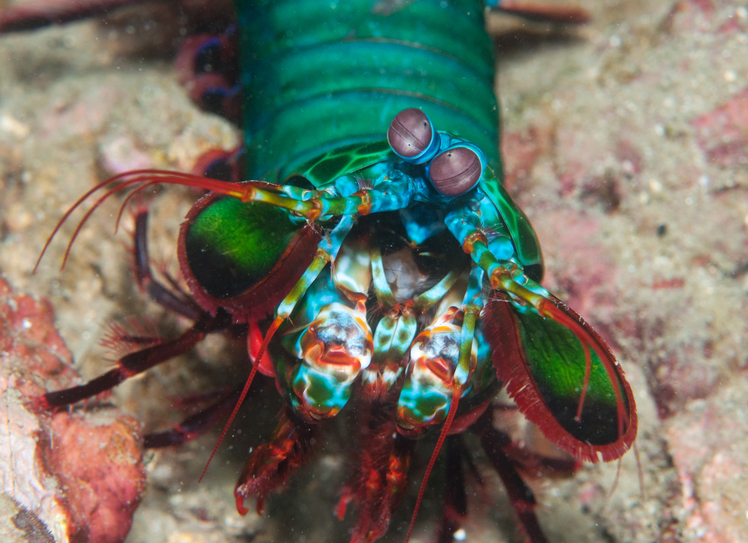
Image: Jung Hsuan/Shutterstock
Scientists from the University of Queensland in Australia have discoveredthat mantis shrimp have an incredibly useful ability - the marine creatures are able to see a variety of cancers inside our bodies. And they've now replicated that ability in a camera that could eventually be put into a smartphone.
Mantis shrimp can see cancer, and the activity of our neurons, because they have unique eyes, known as compound eyes. This type of eye is superbly tuned to detect polarised light - a type of light that reflects differently off different types of tissue, including cancerous or healthy tissue.
"Humans can't see this, but a mantis shrimp could walk up to it and hit it," said Justin Marshall from the Queensland Brain Institute at the University of Queensland in a press release.
"We see colour with hues and shades, and objects that contrast – a red apple in a green tree for example – but our research is revealing a number of animals that use polarised light to detect and discriminate between objects."
His team have now worked with international collaborators to create a camera that can replicate this ability - eventually they hope they could lead to smartphone cameras that would allow people to scan their body for cancers at home.
"The camera that we've developed in close collaboration with US and UK scientists shoots video and could provide immediate feedback on detecting cancer and monitoring the activity of exposed nerve cells," said Marshall.
They did this by revealing that the compound eye of the mantis shrimp contains groups of photocells called ommatidia. Each of these ommatidium has thin micro-villi that can filter polarised light, as well as light-sensitive receptors.
To mimic this in the camera, the scientists used aluminium nanowires to replicate the polarisation-filtering microvilli, and placed these on top of photodiodes, which convert light into electrical current.
"It converts the invisible messages into colours that our visual system is comfortable with," said Marshall.
While current imaging systems already use polarised light to detect cancer, there are limitations to the size of tumours they can detect, and they require large equipment. By replicating the eyes of mantis shrimp, the scientists hope to improve our technology to the point where it could be included into a smartphone. This would reduce the need for more invasive cancer detection methods, such as biopsies, and could help detect cancer earlier.
Impressively, the sensors developed by the University of Queensland team have already been used to "see" the activity of neurons inside a brain in real time, as well as providing early diagnosis of cancerous tissues in mice.
Their research is published in Proceedings of the IEEE.
SCIENCEALERT STAFF 26 SEP 2014
Source: University of Queensland
No comments:
Post a Comment